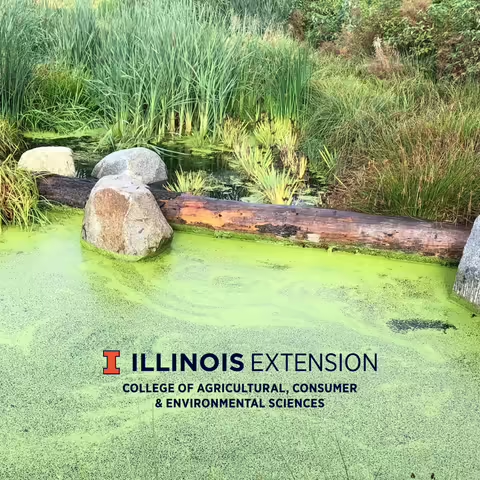URBANA, Ill. – Algae is a natural component of most Midwestern farm ponds, and species of algae vary greatly. Though most pond algae is not toxic, high temperatures and stagnant water may increase chances for toxic algae to thrive.
Toxic algae may become dominant in a pond during periods of drought and high temperatures. Stagnant water with high nutrient levels may produce a bluish-green algae bloom resembling pea soup. Toxic algae bloom may also appear gray or chocolate in color.
"Rainfall helps flush nutrients and algae out of the pond, reducing the potential for blooms," says Duane Friend, University of Illinois Extension energy and environment educator. "If an algae bloom occurs, do not allow livestock or pets to use the pond for drinking or cooling."
Toxins are released naturally by algae as it dies off as the season progresses. "If humans come in contact with the algae, they may experience skin irritation, or nausea and gastrointestinal issues if ingested," Friend says. In severe cases, the toxins can damage the liver.
Illinois Extension does not recommended using algaecide to kill the algae, since this will prompt the release of high amounts of toxins at once.
Using pond dyes to reduce sunlight penetration into the ponds may reduce some algae production, Friend says. Although pond algaecides may be used in early to mid spring, no chemical applications should be applied to ponds after July 1.
SOURCE: Duane Friend, Energy and Environment Educator, University of Illinois Extension
WRITER: Judy Mae Bingman, Communications and Marketing Manager, University of Illinois Extension
ABOUT EXTENSION: Illinois Extension leads public outreach for University of Illinois by translating research into action plans that allow Illinois families, businesses, and community leaders to solve problems, make informed decisions, and adapt to changes and opportunities.
